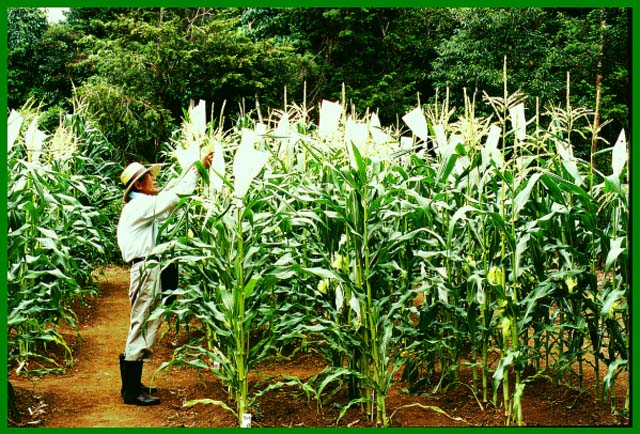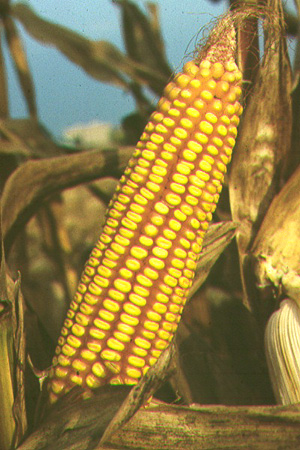|
What is Bt Corn? |
 Permission pending from http://www.niaes.affrc.go.jp/annual/r2001/html/rp28.html Permission pending from http://www.niaes.affrc.go.jp/annual/r2001/html/rp28.html |
HOMEGMO SEMINAR MAIN PAGEBIOLOGY HOME PAGE
|
Corn fields have been continually ravaged by pests throughout the years. Recently, the European corn borer has been a major problem and farmers spend millions of dollars a year trying to control these insects. It turns out that that the bacteria Bacillus thuringiensis produces a natural toxin to the European corn borer, the Bt delta endotoxin. Scientists believed that if they could transfer the Bt delta endotoxin gene from Bacillus thuringiensis to organic corn, then the corn could produce the toxin as well, therefore eliminating the need for pesticides. This new corn, nutritionally identical to normal corn, was dubbed “Bt corn” (Bessin 2004). The first crop of Bt corn was planted in 1996. After its commercialization, many organizations cast doubt on the safety and effectiveness of the new crop (Syngenta, 2003). In particular, its effect on the Monarch Butterfly was emphasized. It originally seemed that Bt Corn killed this species, which often lived in the same ecosystem as corn (European, 2004). However, after several years of testing it was found that Bt corn had minimal damage on the Monarch population (Sears et al, 2001). Another worry arose when Bt corn genes were found in other plants. This horizontal gene transfer worried environmentalists, who believed that transfer of unnatural genes could have unforeseen consequences on the environment. It was these concerns that first prompted the European Union to call on a moratorium on genetically modified organisms (European, 2004).
|
|
